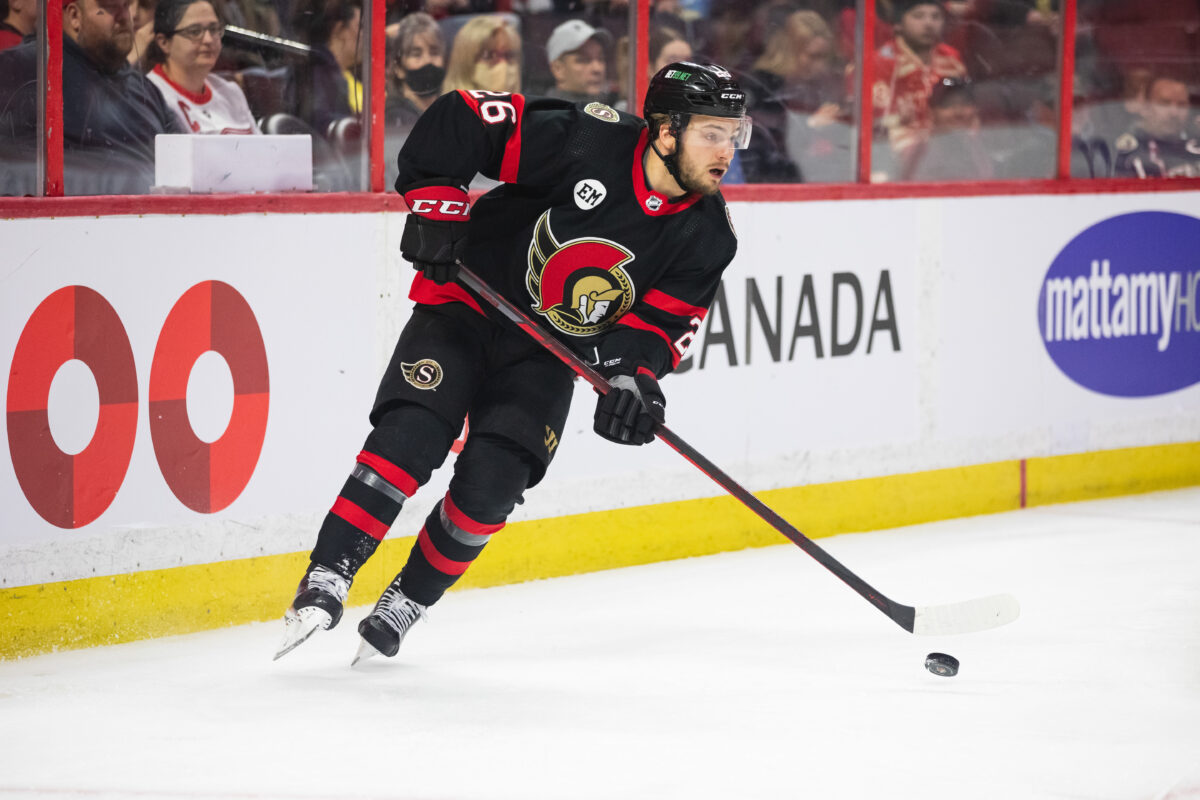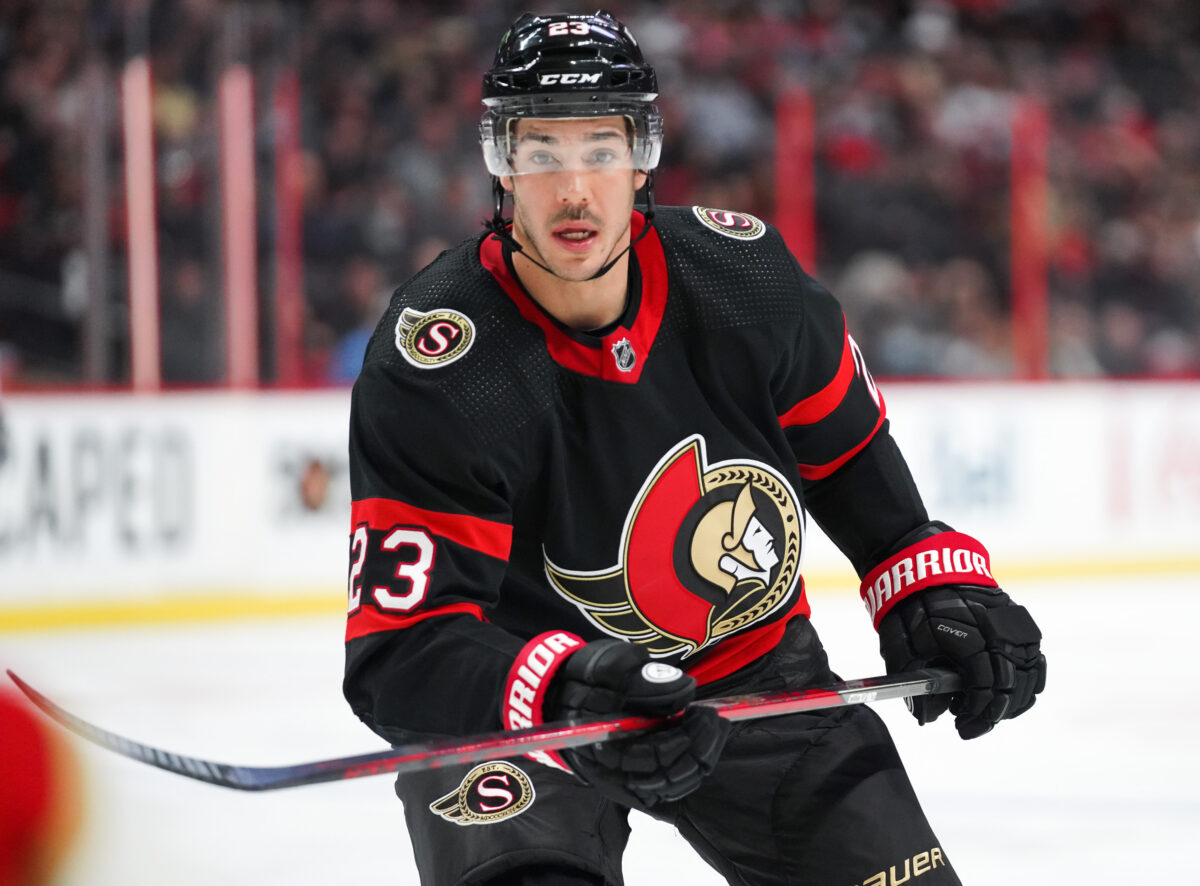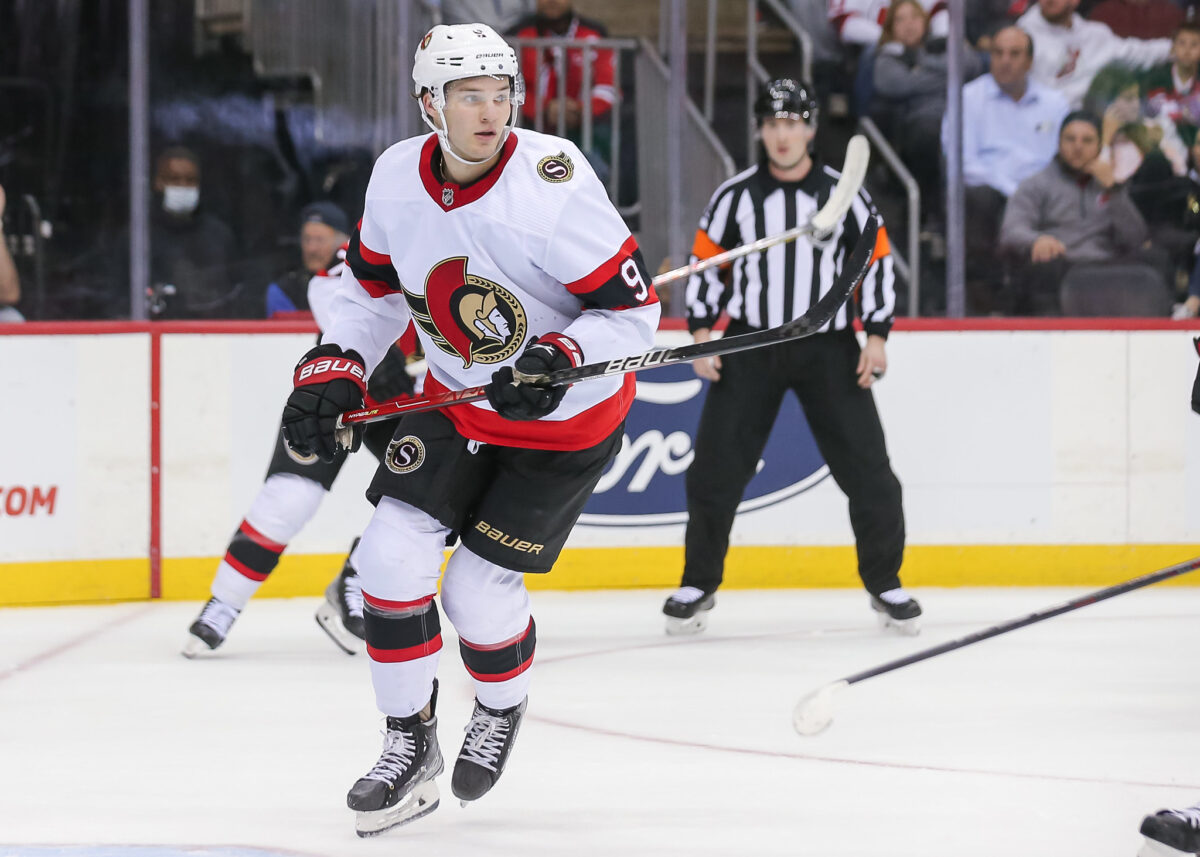The Ottawa Senators have had a fantastic offseason, securing one of the hottest trade targets in Alex DeBrincat, then signing one of the best free agents in Claude Giroux. Add a long-term contract to young star Josh Norris and a trade that sent away Matt Murray’s terrible contract, who they then replaced with veteran Cam Talbot, and suddenly, the Senators are looking like a potential playoff team.
However, ‘potential’ is the key term here because there still are some gaps that could tank all of the team’s goodwill acquired this offseason. The defence remains largely unchanged, and last season, they were one of the league’s worst. Ottawa allowed 266 goals, averaging 3.22 goals per game, which put them comfortably in the bottom half of the NHL, but their 33.41 allowed shots per game were bested by only five other teams. There’s some significant potential among their top prospects, but they aren’t quite ready yet. If they don’t make any further changes before the start of the 2022-23 season, it will be tough to win a lot of games.
A lot can change in a couple of months, and it’s safe to say that fans have not yet seen the final roster that will take to the ice in October. For instance, there are rumblings about Arizona Coyotes’ defenceman Jakob Chychryn that seem eerily similar to the DeBrincat rumours several months prior. Several restricted free agents need deals before the season starts, yet little has been reported about them lately. But even so, several players need to take a big step forward this season to justify their place on this team.
Erik Brannstrom
The Senators’ current defence has two players who are capable of top-four minutes in Thomas Chabot and Artem Zub, and two solid depth options with Nick Holden and Travis Hamonic. Nikita Zaitsev has proven that he is a liability on the blue line and, like Murray, owns a mammoth contract that is weighing the team down, especially with his current play. The last member of last season’s cohort is Erik Brannstrom, but unlike the other players, he hasn’t figured out who he is yet, and time is running out for him to do so.

Brannstrom was acquired at the 2018-19 trade deadline, along with a depth forward and a second-round pick in 2020, in a trade that saw long-time Senators and fan favourite Mark Stone join the Vegas Golden Knights. Hailed as one of the NHL’s top prospects, expectations were high that the speedy, puck-moving defenseman would help give the team’s defence a boost, much in the way Chabot did when he joined the team the season prior. However, despite some incredible minor league numbers, he wasn’t able to make much of an impact in the NHL. In 2019-20, he played 31 games but recorded just four assists.
The following season was better for Brannstrom as he scored two goals and 13 points in 30 games, and hopes were high that he would take another step forward in his development in 2021-22. However, that didn’t happen; the team once again struggled, and the 22-year-old defender recorded 14 assists in 53 games. However, it wasn’t all bad, as some moments showcased his true abilities, especially when paired with Tim Stutzle.
Part of the problem may be his deployment. Thanks to a severe lack of talent on the back end, Brannstrom was tasked with playing an average of nearly 20 minutes a night and starting over 40 percent of his shifts in the defensive end. Brannstrom was never hailed as a strong two-way presence in his draft years but as a possession-oriented blueliner. With the puck, he’s as dynamic as they come, but without it, he’s struggled. Playing on some historically weak Senators’ teams hasn’t helped matters, either, and often exposed many of his flaws. It also hasn’t helped that head coach D.J. Smith hasn’t appeared to be a fan of him, especially in 2020-21, when he often deferred to Josh Brown, who consistently put up worse numbers; he’d eventually get traded to the Boston Bruins.
Thankfully, Brannstrom is still young and working things out. Last season, his defensive point shares (DPS), or how many points on average he contributed because of his defence, sat at 1.4, while his offensive point shares (OPS) were only at 0.1. That may seem low, but his DPS and OPS were just slightly less than Zach Bogosian of the Tampa Bay Lightning, who is noted for his defensive abilities. It also put the young defender seventh on the team in DPS, ahead of Hamonic and Michael Del Zotto.
Related: 2022 NHL Free Agency: Best Restricted Free Agents Remaining
The only hiccup, though, is that Brannstrom still needs a new deal, and it’s clear that the Senators want to start winning more games. Will they continue to wait for a talented puck mover, or will they give his spot to a new up-and-comer? Several players, like Jake Sanderson, Jacob Bernard-Docker, and Lassi Thomson, are close on his heels, and Ottawa is starting to show a lack of patience for inconsistency.
Travis Hamonic
Speaking of the Senators’ defence, another player who will be closely scrutinized is Hamonic. As previously mentioned, he’s considered as a solid depth option for Ottawa that provides leadership and stability on a shaky blue line. However, the circumstances in which they acquired him imply that the Senators expect more from him than just bottom pairing minutes. General manager Pierre Dorion was in the market for a right-handed top-four defender who could take some minutes away from the overworked Chabot at the 2022 Trade Deadline, and the team sent a third-round pick to the Vancouver Canucks to acquire his services, a price that seemed startlingly high for a player that no one else wanted.

Fans were quick to criticize the deal, seeing more of the same from a GM that had spent too much on depth players in the past. Although Hamonic averaged the fourth-highest ice time among Canucks’ defencemen at 18:22 a night, he was far from a top-four defender. He ranked seventh in DPS among Vancouver’s defence with a 1.1 and has been a negative possession player for most of his career. While defensive defencemen won’t have high Corsi or Fenwick numbers simply because their job is to get the puck away from opponents, he didn’t have a high on-ice save percentage, either, sitting sixth among Cancuks defencemen and 13th on the team. Add in the personal issues he had at the start of the season, which caused him to sit out until November, and it seemed like a recipe for disaster.
But once he arrived in Ottawa, Hamonic looked pretty solid. His on-ice save percentage dropped slightly but still ranked second among full-time Senators’ defencemen, just behind Zub. His defensive zone starts also increased, yet he handled the additional pressure well, which allowed Chabot to play a more offensive role. He even helped make Del Zotto look good, with the pair ending the season at a plus-5.
However, when Hamonic joined the Senators, the season was already a lost cause. This season, there will be more pressure to win games and remain competitive throughout the full 82-game schedule. He was disappointed to leave Vancouver as they were pushing for a playoff spot, but he was hardly part of their end-of-season run, even spending some time in the minors in 2021-22. That seems an awful lot like Del Zotto last season in Ottawa, who they bought out and later signed with the Florida Panthers to a two-way deal. Unless Hamonic can step up this year and prove he’s a top shutdown defender, the Senators’ defence may end up performing very similarly to last season.
Josh Norris
It may seem strange that Norris, one of the Senators’ best players, is on this list. But after signing an eight-year, $63.6 million contract, giving him the third-highest cap hit on the team, all eyes will be on him in 2022-23. Despite missing 16 games last season, he still scored 35 goals and 55 points, which put him on pace to hit 43 goals and 68 points over a full season. Had he hit that, he would have ranked third all-time in franchise goals per season, surpassing Marian Hossa’s 2002-03 45-goal campaign and nearly eclipsing Dany Heatley’s back-to-back 50-goal seasons in 2005-06 and 2006-07. Furthermore, no Senator has hit 40 goals since Daniel Alfredsson did so 14 seasons ago.

Norris is already in esteemed company, but is that enough to justify paying him nearly eight million per season until 2030? Currently, eight players in the NHL carry with them an $8 million cap hit, and six more have a cap hit of at least $7.8 million. Included in that list are Evgeny Kuznetsov, a four-time 70-point player, and Kevin Fiala, who just put up a career-high 85 points and cashed in at free agency. Robert Thomas, who signed a similar eight-year extension the day before Norris, put up 77 points last season.
Using those comparables, it seems that to justify an $8 million cap hit, you need to be producing at a point-per-game pace, and Norris is not quite there yet. That’s not to say he won’t get there — at just 23 years old, he is well on his way to becoming a star in the NHL — but the Senators are going to need to see a return on their investment this season. A full season from himself, as well as first-line partner Drake Batherson, will certainly give him a boost, but the team’s second line of DeBrincat, Giroux, and Stutzle promises to take some of the ice time away from the top unit. There’s no question that one day, Norris will be a regular 70-80 point player. Rather, the question is when he will get there, and the Senators are hoping that it comes much sooner than later.
Senators Are in a Good Position to Improve
With a young core and several strong offseason moves, the Senators are in a prime position to make some serious strides in 2022-23. That means that the wheat will very quickly be separated from the chaff over the next several months, and players that are not actively contributing to the team’s success won’t have a spot on the roster for very long. Dorion has shown he’s not afraid to pull move players if they’re not pulling their weight, and while Norris will receive much more patience than the others, fans will need to see results this season from these three players. Otherwise, they’re holding the team back from competing for the playoffs.
Stats from hockey-reference.com